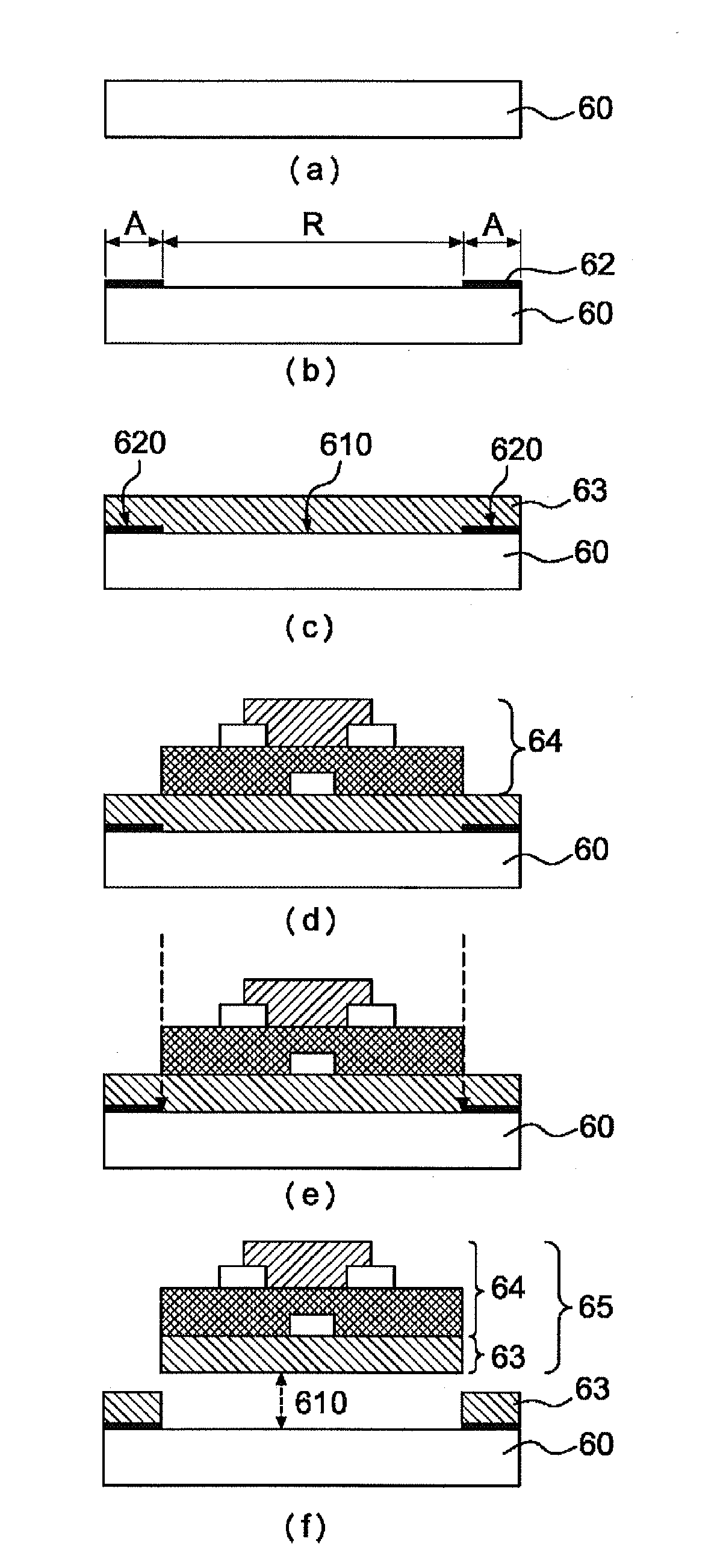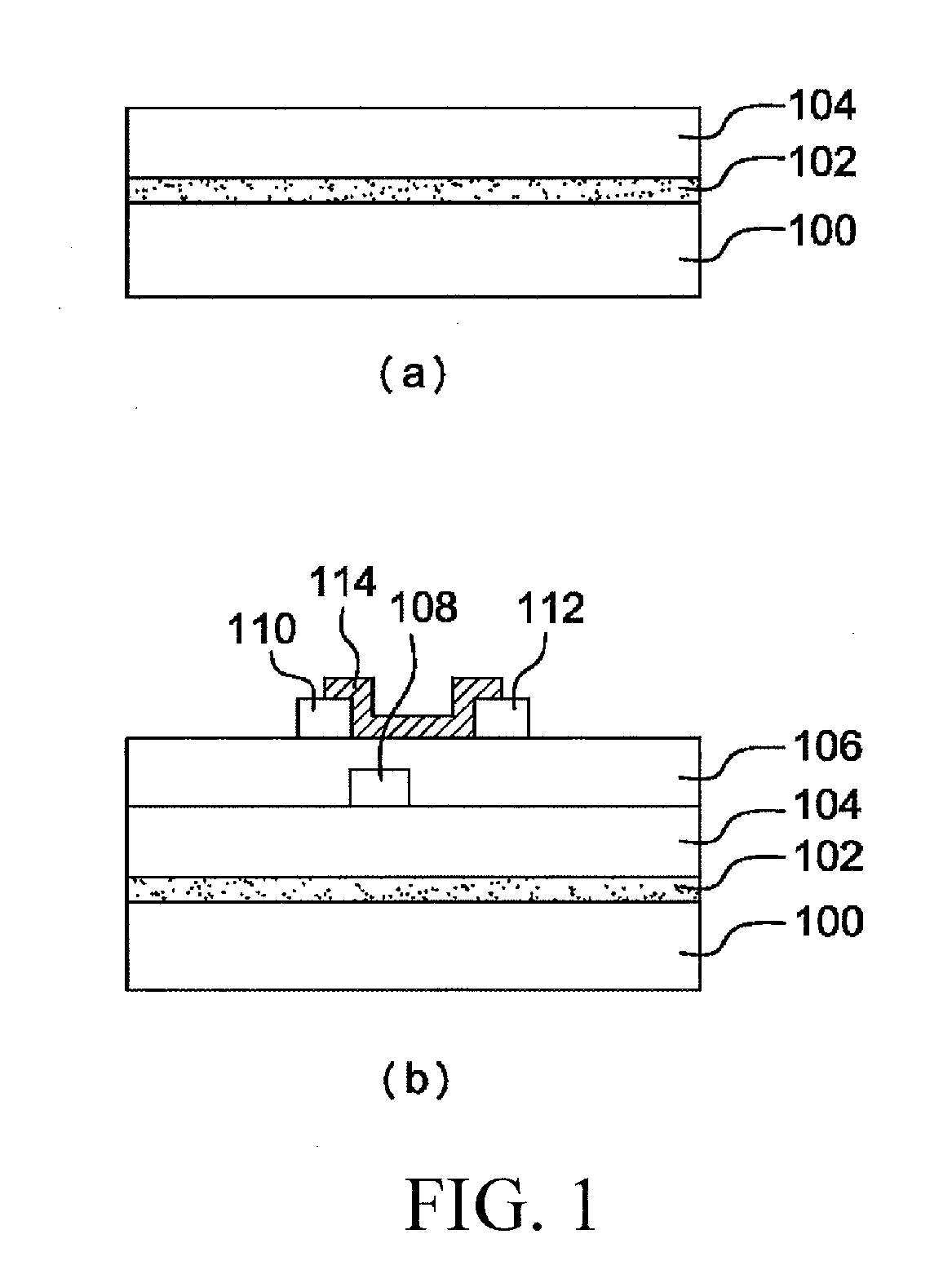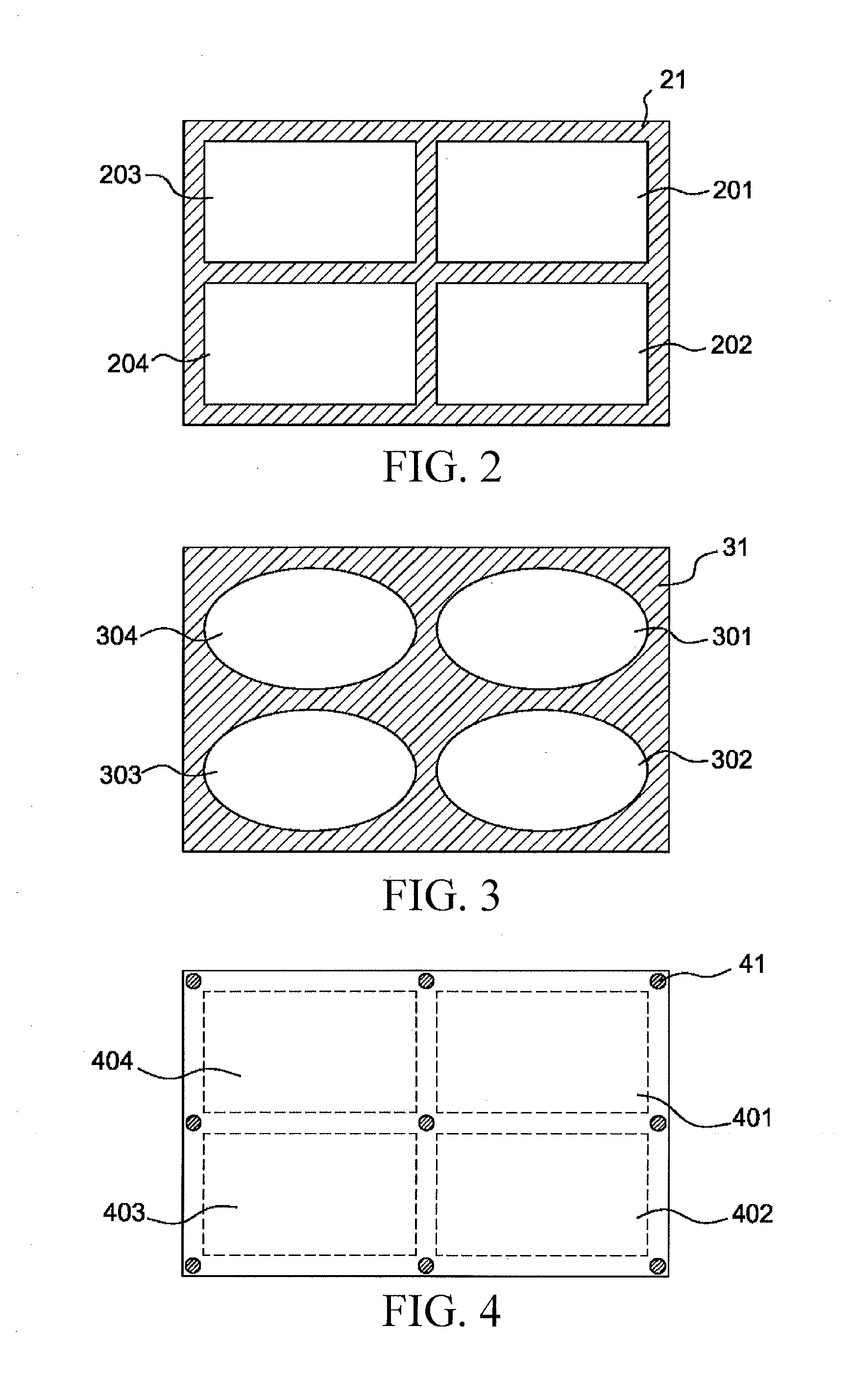Method for fabricating a flexible device
- Summary
- Abstract
- Description
- Claims
- Application Information
AI Technical Summary
Benefits of technology
Problems solved by technology
Method used
Image
Examples
Embodiment Construction
[0020]The term “release region” as used herein refers to a region where a flexible substrate is to be separated from a rigid carrier in the method of the present invention.
[0021]The term “adhesion region” as used herein refers to a region where a flexible substrate is to contact with a rigid carrier through an adhesion promoting layer in the method of the present invention.
[0022]The term “a portion of the flexible substrate layer” as used herein refers to 50% to 99.9%, and preferably 80% to 99.5% of the flexible substrate layer.
[0023]The rigid carrier used in the present invention may be any one known to persons of ordinary skill in the art of the present invention, for example, but not limited to, glass, quartz, a wafer, ceramic, a metal, or a metal oxide.
[0024]The method of the present invention is mainly characterized by: forming an adhesion layer with a given pattern on a rigid carrier before forming a flexible substrate layer, such that a portion of the flexible substrate layer...
PUM
| Property | Measurement | Unit |
|---|---|---|
| Adhesion strength | aaaaa | aaaaa |
| Flexibility | aaaaa | aaaaa |
Abstract
Description
Claims
Application Information
 Login to View More
Login to View More - R&D
- Intellectual Property
- Life Sciences
- Materials
- Tech Scout
- Unparalleled Data Quality
- Higher Quality Content
- 60% Fewer Hallucinations
Browse by: Latest US Patents, China's latest patents, Technical Efficacy Thesaurus, Application Domain, Technology Topic, Popular Technical Reports.
© 2025 PatSnap. All rights reserved.Legal|Privacy policy|Modern Slavery Act Transparency Statement|Sitemap|About US| Contact US: help@patsnap.com



